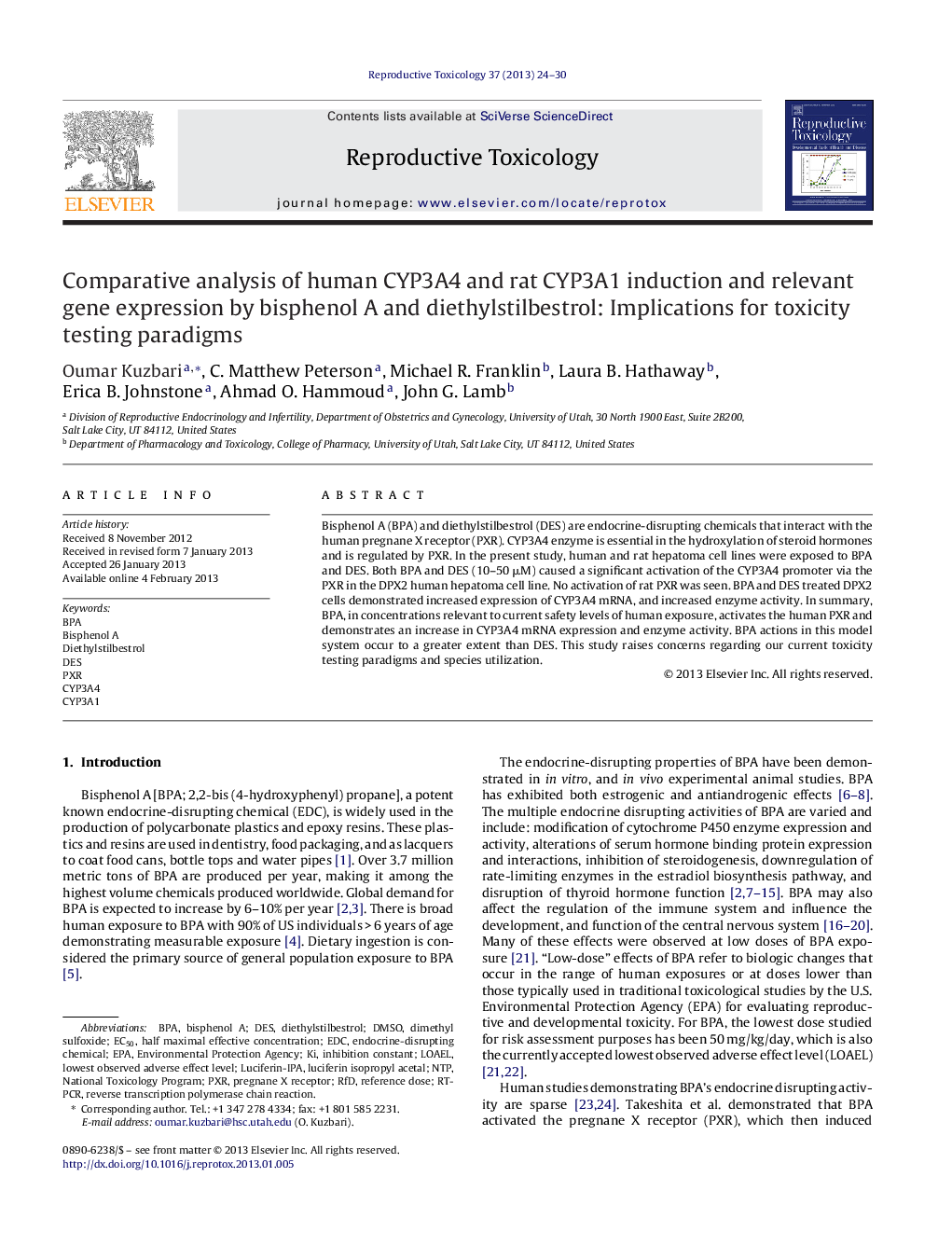| کد مقاله | کد نشریه | سال انتشار | مقاله انگلیسی | نسخه تمام متن |
|---|---|---|---|---|
| 2593772 | 1562182 | 2013 | 7 صفحه PDF | دانلود رایگان |

Bisphenol A (BPA) and diethylstilbestrol (DES) are endocrine-disrupting chemicals that interact with the human pregnane X receptor (PXR). CYP3A4 enzyme is essential in the hydroxylation of steroid hormones and is regulated by PXR. In the present study, human and rat hepatoma cell lines were exposed to BPA and DES. Both BPA and DES (10–50 μM) caused a significant activation of the CYP3A4 promoter via the PXR in the DPX2 human hepatoma cell line. No activation of rat PXR was seen. BPA and DES treated DPX2 cells demonstrated increased expression of CYP3A4 mRNA, and increased enzyme activity. In summary, BPA, in concentrations relevant to current safety levels of human exposure, activates the human PXR and demonstrates an increase in CYP3A4 mRNA expression and enzyme activity. BPA actions in this model system occur to a greater extent than DES. This study raises concerns regarding our current toxicity testing paradigms and species utilization.
► We performed a comparative analysis of human CYP3A4 and rat CYP3A1 induction and relevant gene expression by bisphenol A and diethylstilbestrol.
► Diethylstilbestrol and bisphenol A (in concentrations relevant to current safety levels of human exposure) activate the human PXR and demonstrates an increase in CYP3A4 mRNA expression and enzyme activity in human hepatoma DPX2 cells.
► Bisphenol A and diethylstilbestrol do not activate the rat PXR.
► These findings raise concerns regarding present toxicity testing paradigms and species utilized.
Journal: Reproductive Toxicology - Volume 37, June 2013, Pages 24–30